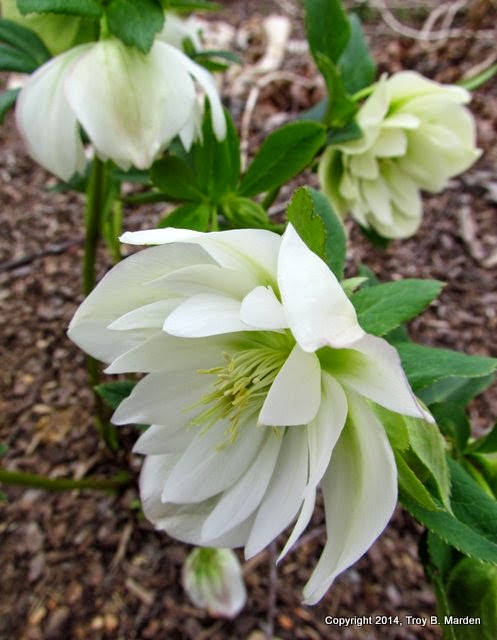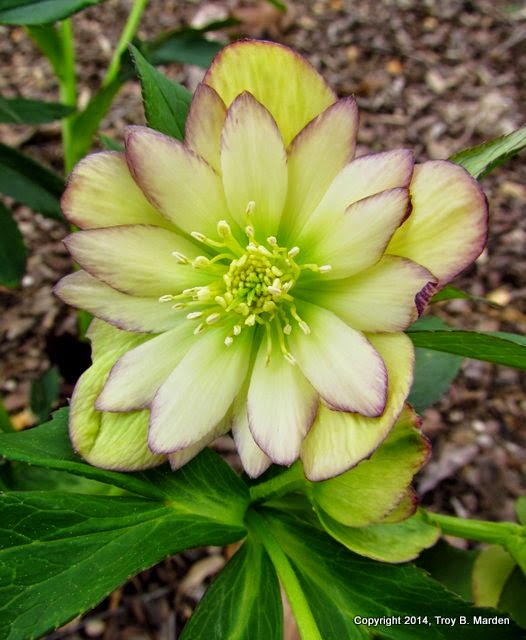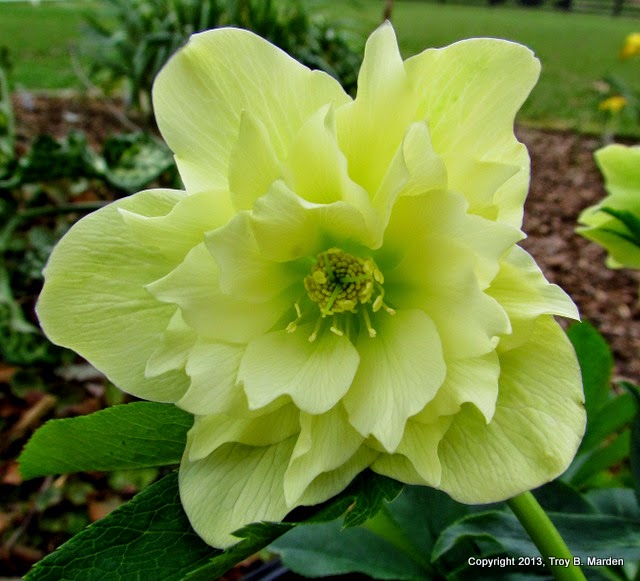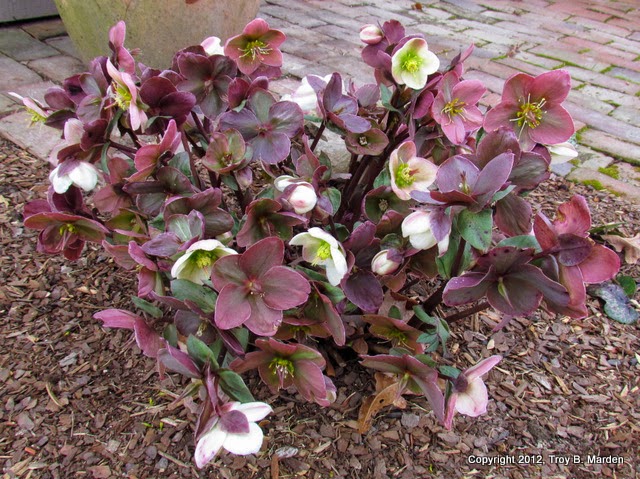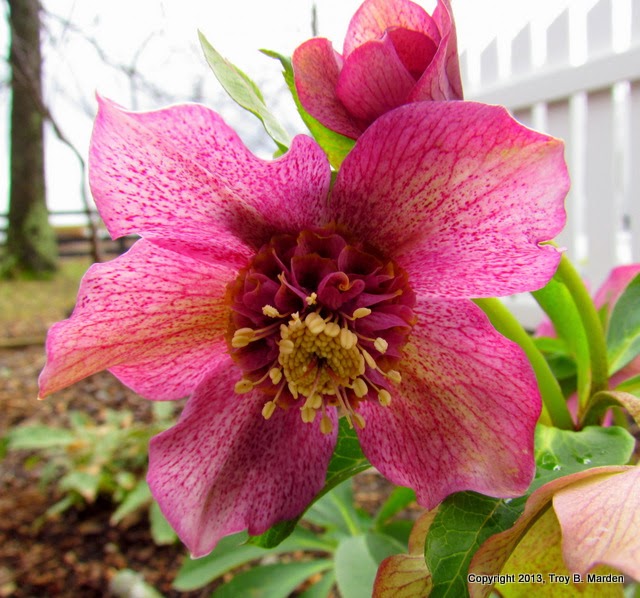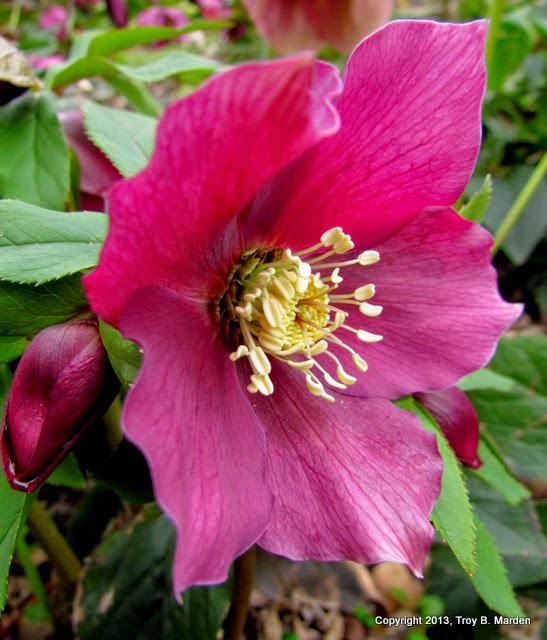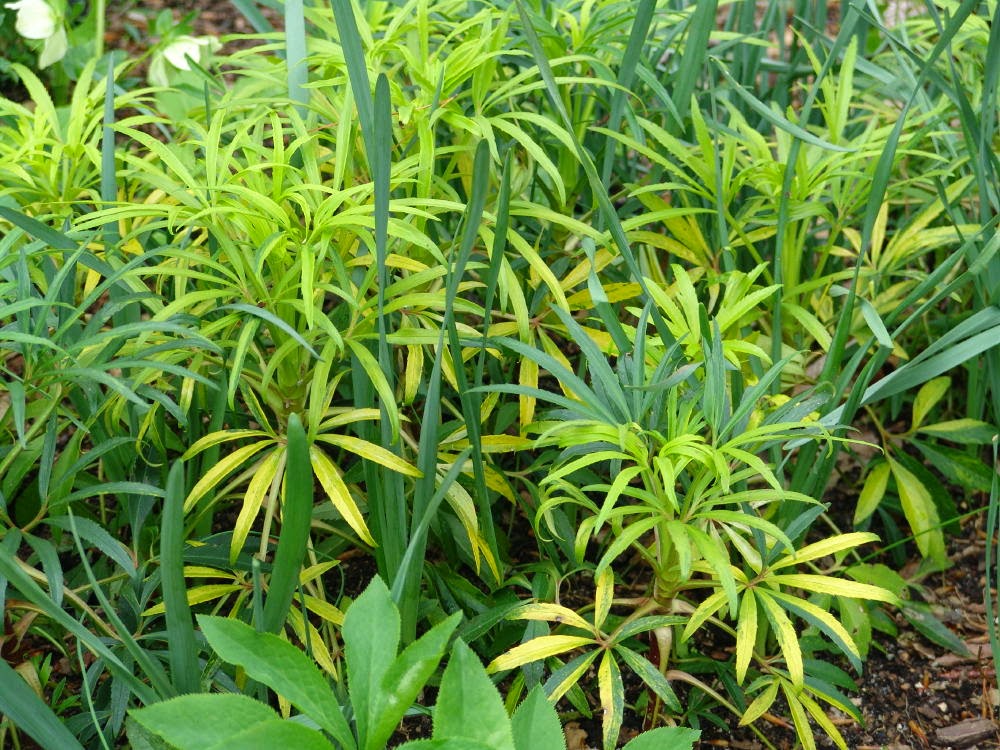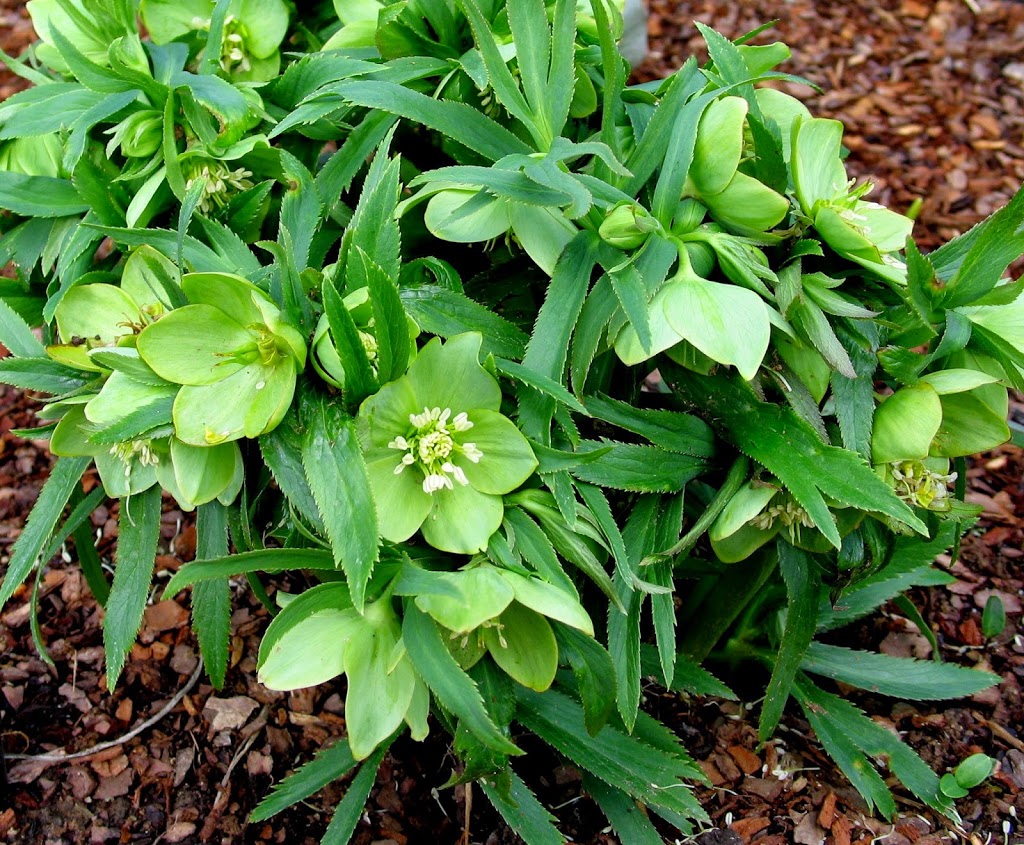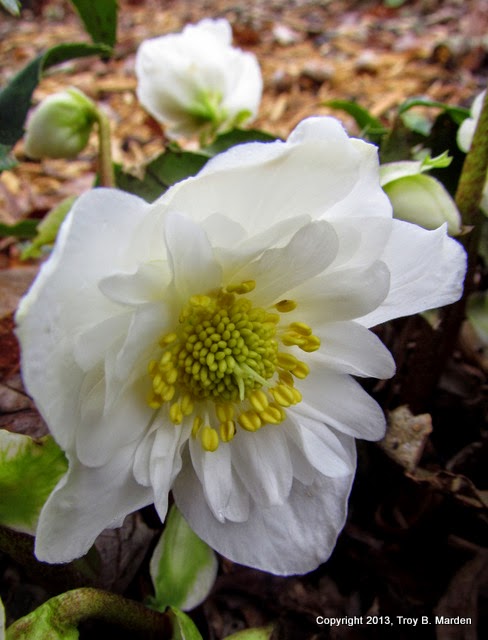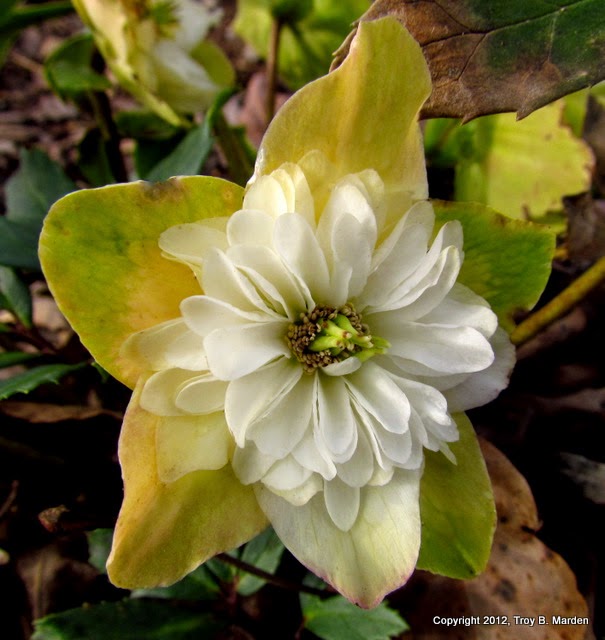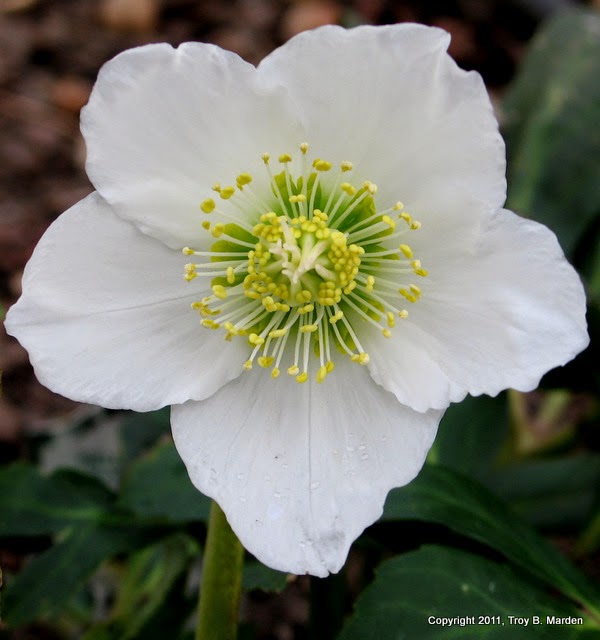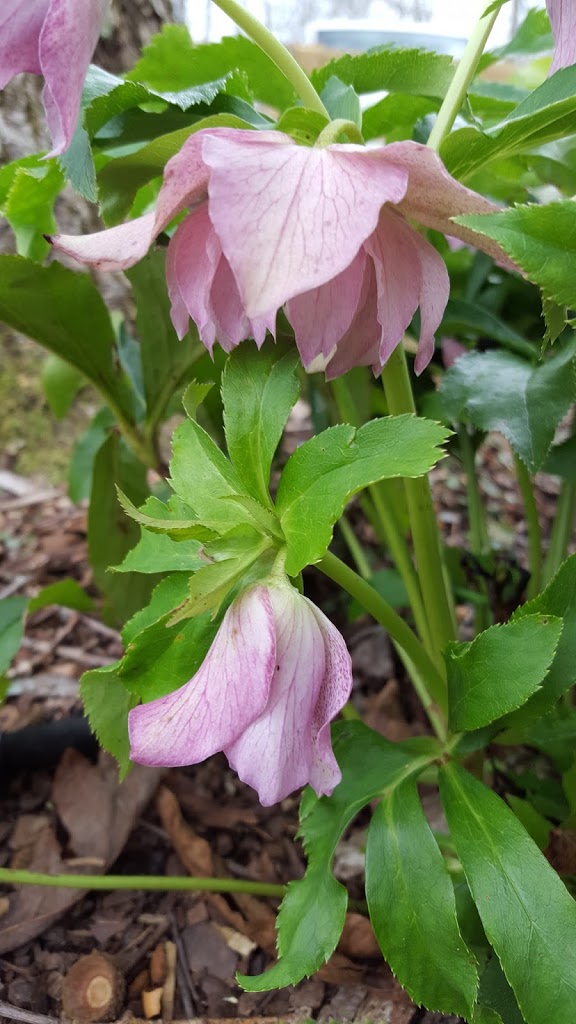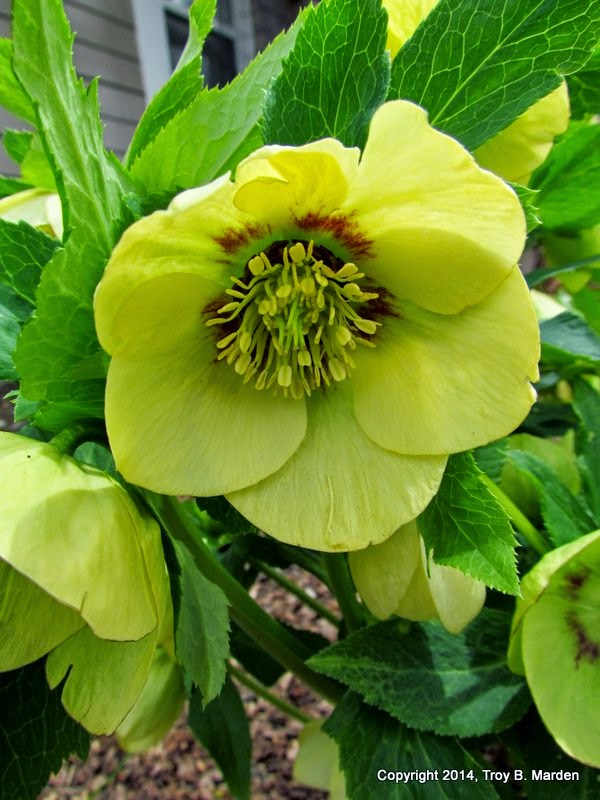
Christmas Rose | Deer Resistant Plants | Evergreen Perennials | Hellebores | Helleborus | Lenten Rose | Winter Flowers | Winter Garden
I have posted several times in the past about the “roses” of winter–Lenten rose, Christmas rose and their kin–none of which are roses at all, or even closely related. That said, they are, perhaps, the most anticipated flowers of the year for me if for no other reason than the time of year they bloom. Well, that’s not the only reason. They’re also incredibly beautiful, but the timing of their flowers has much to do with it since their blossoms can appear anytime between Thanksgiving and Easter depending on which species and cultivars you grow. Helleborus is the Latin name you should call them by if you want to be most accurate. Mine took a beating this winter when the temperatures dropped into the single digits out here on my bitterly cold and windswept ridge with no snowcover. With snow, they wouldn’t have suffered at all. Unfortunately, their buds were already pushing through the soil during the last cold snap and many were severely damaged. The show will not be as spectacular this year, but this is the way of things. Next year will be better!
In the meantime, I thought I’d share a few pictures from years past of some of my favorite varieties and those that have performed well here. Keep them happy by planting them in bright, dappled shade in well amended “woodsy” soil. If you’re successful with hostas, Solomon’s seals and other denizens of the shade garden, hellebores will pose little problem. Once established, many are quite drought tolerant, particularly the “bear’s foot” or “stinking” hellebore (though there is nothing stinking about it!), Helleborus foetidus. Enough rambling! On to some personal favorites:
Helleborus x hybridus ‘Golden Sunrise’–I love the color of this one. Hybridizers have been working on a good, clean yellow for decades and this is one of the best. It also is one of the more vigorous plants in the Winter Jewels series from Ernie and Marietta O’Byrne, near Portland, Oregon.
Helleborus x hybridus ‘Sparkling Diamond’, also from the O’Byrnes and part of their Winter Gems series of double-flowering hellebores, has performed admirably here. Give it a couple of seasons to settle in before you expect a real show, but once it gets its feet under it, it is nothing short of spectacular!
This flower and the following both belong to the same varietal group, again from the O’Byrnes Winter Gems series and perhaps one of the more coveted (at least by me) of the bunch. ‘Golden Lotus’ bears semi to fully double blooms in the most luscious shades of buttery yellow, often with a reddish or purplish picotee edge.
A clear, unmarked form of ‘Golden Lotus’. Exquisite beauty! The variation in these strains come from the fact that they are grown from seed, but in a very select way that ensures the colors remain true to form. This slight variation in forms and colors, for me, is part of the fun!
A more complex hybrid, ‘Winter Moonbeam’ has performed exceptionally well in the garden here for several years. The extreme cold of this winter did freeze most of the blooms as they were beginning to emerge, but the plant will rebound and next year, the show will go on. The first flowers often open here in January and continue opening and changing color for 6 weeks or more.
‘Elly’ is another double flowering variety that is a little looser and almost frilly in form. Unfortunately, the plant has been weak here and I may remove it to plant something that will be a better performer.
‘Tutu’ was a gift from a friend and I love it! The plant is vigorous and the blooms plentiful. Each is highlighted by a central boss of enlarged nectaries that do, indeed, look like a tutu.
‘Red Lady’ is part of an old seed-grown strain which, if you can buy them when the plants are in bloom to get the richest and purest colors, are well worth adding to the garden. This one has flowered reliably every year, even when we’ve had crazy swings in the temperature.
I love this form of Helleborus foetidus named ‘Gold Bullion’, with bright, golden yellow leaves and chartreuse flowers. Being evergreen, this adds a great splash of color to the garden throughout the year. Helleborus foetidus reseeds prolifically where it is happy and ‘Gold Bullion’ comes largely true from seed. Solid green or weakly variegated seedlings should be pulled out to keep the brightest gold forms thriving.
One of the more unusual species I have in the garden is Helleborus multifidus, its pale green flowers appearing in early spring followed by the most finely dissected leaves of any of the hellebores. It is worth growing for its foliage, alone, and the flowers, in my opinion, are just a little extra beauty in the early spring.
A personal favorite in the garden that I have, unfortunately, lost and need to replace is Helleborus niger ‘Double Fantasy’, one of several double-flowering forms of the so-called Christmas rose. While it is usually just a little later than Christmas, it does flower quite early in the year, opening its pristine white blooms by mid- to late January here.
As it ages, the sepals (petals) of ‘Double Fantasy’ often turn green while the petals in the center remain white, giving a beautiful two-tone effect to the flower.
And finally, one of the top performers here, Helleborus niger ‘Josef Lemper’, from the Heuger breeding program in Germany. This is the “little engine that could” in my garden, with its blooms appearing as early as mid-November and continuing without stopping for more than two months. As it finishes flowering in mid- to late January, the other species are beginning to emerge so the show never stops!
This doesn’t even begin to cover the many species and cultivars that are in the trade today (it doesn’t even scratch the surface of all that I grow), but showcases a few that have grown well here over the past several years as I’ve developed the garden. Enjoy!

